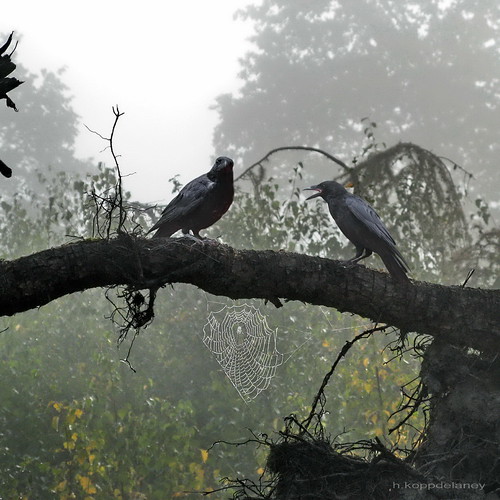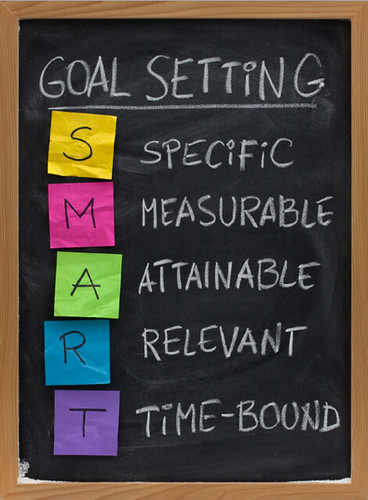Photo Credit: Hartwig HKD via Compfight
I’m inspired by Tony Sinanis’ video updates about the happenings at his school in Jericho, NY. Yesterday I presented a couple of these videos to the kids and asked them whether they wanted to do such a thing for our classroom. They were very interested! I’m pleased, so we’ll start this week and post to our classroom website.
This weekly review of our time together fits with a more general desire I have to move toward documenting the learning we are doing on a moment by moment basis, which is itself strongly connected to my sense that learning happens when we are mindful of the deeper structures of our lives. I’m hoping that this weekly reflection will turn into a routine and that the kids will begin to document their work throughout the week.
But, like most ideas, the more I think about this, the more I wonder. Specifically (and this is difficult for me to admit) I wonder what the kids will say about what we do during our “reading” class. I love to read, many of the kids love to read (though, like other classrooms, there are exceptions to that rule…); some of the best moments we have in our class happen during the conversation around the books we read. Reading class takes up a large chunk of our day.
But what will they tell others about our “reading class?” How can one describe a conversation? An insight? Or, in the other side of the reading class I present to the kids each day, what will they say about the teacher and school driven goals that I and The Reading Program create for them?
![]() Photo Credit: Paula Naugle via Compfight
Photo Credit: Paula Naugle via Compfight
All this causes me to wonder about our “goals” during reading class, and whether they are powerful enough to be memorable, or clear enough to be described.
Which makes me wonder about how to teach reading.
Which makes me question myself, and how I do things.
Which brings me to the “insight” that I had this morning over my cup of coffee in front of the wood stove, always a dangerous and exciting place to inhabit, lost in thought, on a cold wintery morning.
I once asked my nephew when he was going into fourth grade whether he liked reading. He looked at me with this serious expression and asked a question back at me: “Do you mean reading, the thing that you do, or reading, the class?” He went on to say that he definitely liked the one, but not the other. In fact, in his fourth grade mind, it seemed they inhabited two separate realms.
Another story. I feel about teaching reading the same as I felt when I first taught writing as a US history graduate student at the University of Minnesota during the 1980s. In those days our large teaching cohort (numbering over 100!) had passionate discussions about whether writing was even something you could teach in isolation, as a subject on its own, or if it should be taught across the curriculum as part of the classes in which it was used. An existential crisis for writing teachers, no?
I never resolved that problem back then; I guess some of my doubts linger regarding reading.
Why?
The way we normally teach reading is as a set of mental processes to practice (inferring, visualizing, synthesizing, evaluating, determining importance, etc.); as text structures to recognize (cause/effect, comparison, description…etc.); or thinking processes to complete (evaluation, making judgments, etc…) All these cast reading as a process, which it is, of course. But processes without content are abstract and difficult to learn and subject to the learner creating misconceptions because the context is not clear. Why visualize? Why infer? Why even evaluate or determine if not to do something with the ideas we have?
Here’s a concrete example. As an historian, I gained a greater sense of what industrialization meant in the lives of people. I started with a quite shallow understanding, basically just the knowledge that this word was important to historians. But as I read about the deskilling of workers, the revolts against the machine, the concentration of capital, the rise of an educated middle class, growing waves of urbanization and the decline of the rural landscape, environmental changes and changes to the health of individuals and the planet, I could almost feel a story growing inside me. Soon, what was difficult to understand, now had nuance and texture. New information just added to that richness. Learning history actually gave me something that I can feel.
But reading? The processes I teach the children, if we do that much in the classroom, actually become less known the more we are able to deploy them because these processes become automatic. In fact, when did I become an “expert” at inferring? At what point did my visualizing achieve “mastery?” The only way to tell is if the things I infer as useful, and the visualizing yields a piece of the intellectual puzzle I’m building.
So, what to tell the kids? Can we report to parents that we have “done” visualizing this week? Is that even true? Can we say that we are “working on” making inferences? That we have almost achieved “synthesizing” mastery? Or do we tell them that we’ve been reading some cool books, name them, and then talk about what we’ve learned from them and from each other? But, if the later, what am I teaching them?
And how can the thought of creating a video update for the parents in our classroom cause me to have an existential crisis?
Probably, a long time ago, I read too much Kierkegaard. Maybe I should just go get another cup of coffee. 🙂




I don’t have enough brain power to write a thoughtful response to your writing, but I will thank you for visuals that made me chuckle!
(I’m also mired down…for me, it’s in the how and when of documenting the what and what exactly does it look like…but I’m still intrigued enough by what it could look like that I haven’t given up on the idea!)
Mary Lee, Thanks for stopping by. Maybe this early morning fire-gaze doesn’t deserve a thoughtful response! I sometimes follow a tantalizing thought farther into the fire than I should, far enough that things can get a little uncomfortable.
I’m really curious about the documenting stuff. It sounds difficult, and time-consuming, but if it were possible…perhaps a very important way to “teach” the habits of mindfulness. And what a great way to really listen, too, and to discover what is cooking in the crucible of our day.
I decided that, with just my one iPad, and my own digital camera, we would start small-ish, with a video update for parents. I’m hoping that we can learn to notice things that way, even archive some pieces of it (we’ve assigned one “reporter” for each subject and one helper to take notes, talk to classmates, and develop a short report on learning. That sounds almost manageable. I’m hoping it gets to be too interesting to limit. Eventually, I’d love for kids to document what they’ve done in a week (maybe even with a focus question??) and upload these to a Evernote folder shared with each one, then choose one piece to highlight, talk/write about, and then delete the rest. (I’m imagining there to be a benefit to reflecting and winnowing.)
At any rate, Mary Lee. There is absolutely no reason for YOU to go down this rabbit hole! I’ve had the question posed by my writing-teacher colleagues and me (a very early PLN, I might add) for over 25 years. I imagine I’ll never really answer it. Perhaps this post is simply an attempt for me to describe the Wonderland of teaching and learning from inside the rabbit hole (where it is sometimes too dark to think), so I can continue on. 🙂